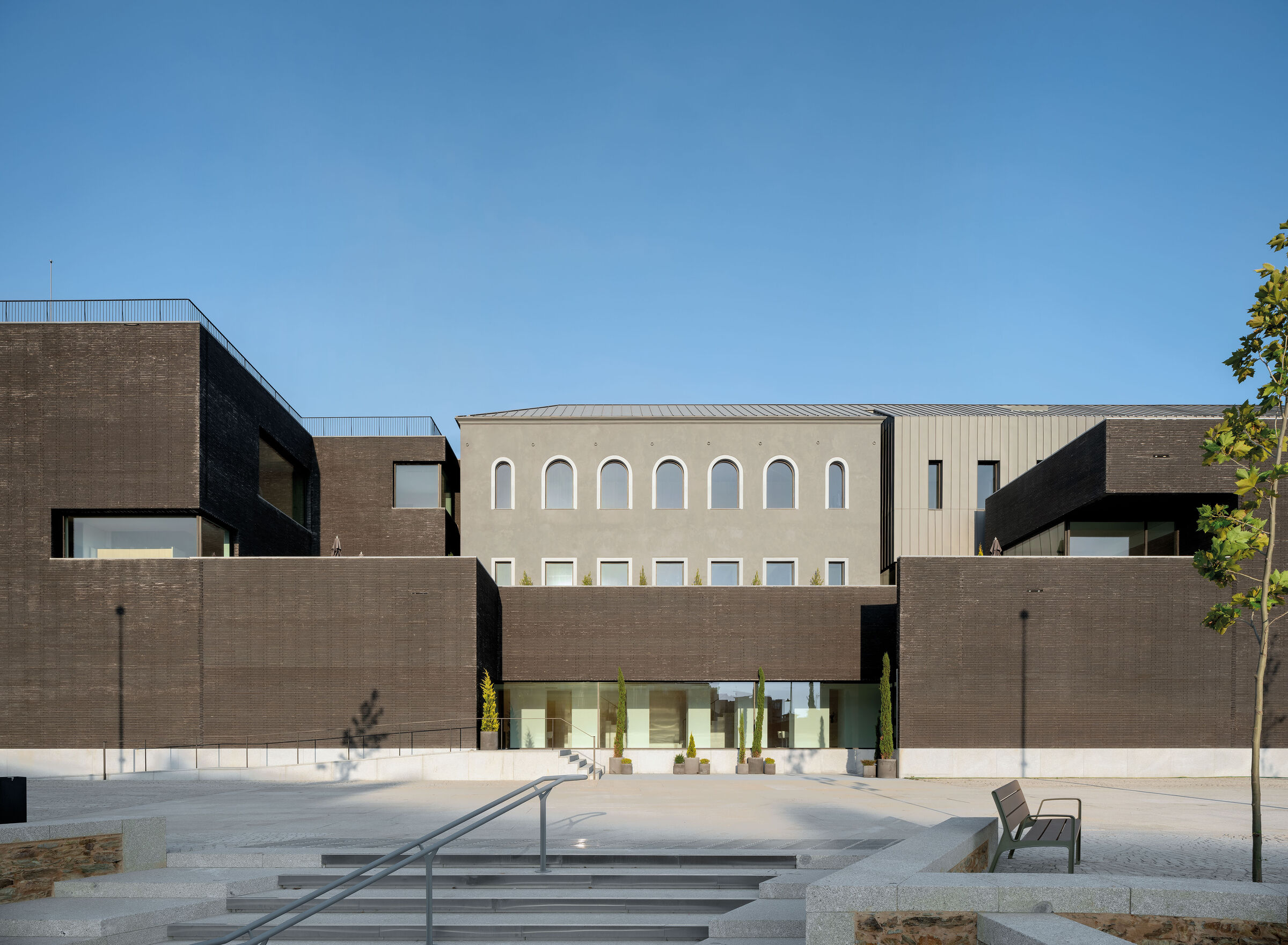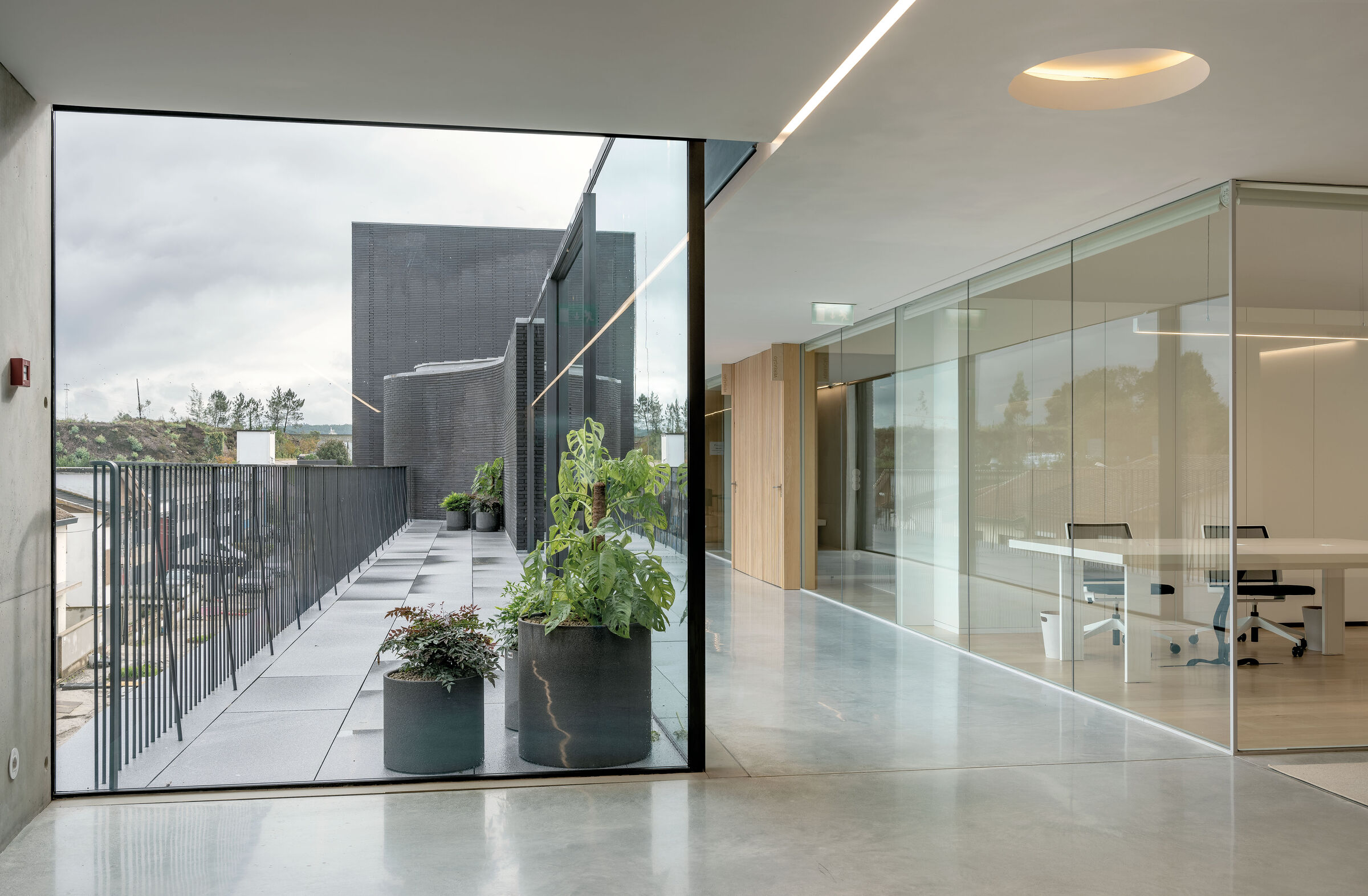At a time when architecture often faces the challenge of blending tradition with modern design, NOAQR’s Trofa Town Hall project shows how both can exist in harmony. This impressive project combines renovation and expansion that carefully balances the town’s industrial history with modern design elements. In an exclusive interview, the architects share their vision and thoughts on the project.
The Trofa Town Hall project started with a clear goal: to preserve the industrial heritage of the existing warehouse while adding modern elements. According to the architects, the main focus was to respect the essence of the original structure without falling into a nostalgic or overly historic approach.
“We preserved the original structure of the main building, focusing on restoring the three wooden floors and keeping authenticity through materials like lime mortar and traditional paints,” they explained. “The town’s industrial heritage guided us, but we were careful not to compromise the contemporary vision of the project.”
This careful balance ensures that, while the past is honored, the building remains relevant for both the present and the future. Traditional materials pay homage to the town’s history, while modern architectural elements keep the structure functional and visually appealing for years to come.
Read also- A Conversation with Wallflower Architecture + Design: The Magic of Touching Eden House


© Attilio Fiumarella & Duccio Malagamba
One of the new town hall’s most distinctive features is its black brick facade. This design choice immediately connects the building to Trofa’s industrial roots. However, as the architects explain, the decision wasn’t purely symbolic. It was a practical response to creating a modern structure that would stand the test of time.
“The choice of black brick is less about industrial memory and more about integrity and durability,” they noted. “We wanted to create a strong building, resisting time, with materials that express themselves independently.” For NOARQ, material selection isn’t just about aesthetics; it’s about creating an honest and enduring structure.
Sustainability is always a priority when considering the future of architecture. For NOARQ, sustainability goes beyond using eco-friendly materials; it’s about making smart choices that benefit both the environment and the building’s durability.
The architects emphasized that “Sustainability means using local materials and technologies. ” However, the project faced challenges in achieving energy efficiency without compromising the design. Their solution was to insulate the structure while exposing the concrete inside, allowing the building to age gracefully and maintain energy efficiency.
The decision to use solid brick instead of cladding materials also reflects the studio’s philosophy of permanence. “Solid brick remains a durable material, even when damaged. It expresses itself and functions independently,” they added.

© Attilio Fiumarella & Duccio Malagamba
As with many of its projects, NOARQ’s design for Trofa Town Hall follows the Vitruvian tradition of using materials in their simplest form. This minimalist approach is evident in its choice to work with OTIIMA’s minimalist window systems.
“Architecture is something that nature cannot build,” they quoted Louis Kahn, reflecting on the evolution of design. The project’s inclusion of large glass elements directly responded to the need for natural light while maintaining the building’s solid, minimalist structure. OTIIMA’s systems, with their slim frames and focus on glass, allowed the architects to introduce light without disrupting the flow of the building.
“The use of minimalist systems helped redefine the traditional window, allowing for large glass elements that appear almost invisible, emphasizing transparency and continuity,” the architects said.
Every architectural project involves balancing criticism and creativity, and the Trofa Town Hall was no different. NOARQ’s approach is naturally critical but uses creativity to solve challenges.
“Creativity isn’t a sudden moment of inspiration,” they said. “It’s a series of small actions that come from trying repeatedly to solve problems.” This practical method ensured that every design choice, no matter how small, was carefully considered and tested until the best solution was found.
In the end, the Trofa Town Hall project is more than just a renovation or extension; it’s a bold statement about the future of civic architecture. For NOARQ, the project reflects their ongoing drive to push limits, rethink public spaces, and leave a lasting mark on the urban environment.
“I would like the work to speak for itself, without the need for explanations or subtitles,” the architects concluded. The building, with its quiet strength and thoughtful design, says a lot about the future of civic architecture—where history and modernity aren’t in conflict, but in conversation.

© Attilio Fiumarella & Duccio Malagamba
This project highlights NOARQ’s dedication to architecture, which honors the past and confidently moves toward the future. By combining traditional materials with innovative design, they’ve created a civic space that celebrates Trofa’s industrial heritage and envisions its future.
